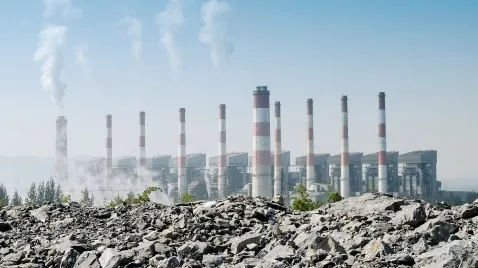
Why are Australia’s coal plants exiting at a faster pace?
Coal plants’ profitability is declining with the entry of low-cost renewable energy.
Australian consumers have been enjoying lower electricity prices and are even expecting to pay 6% or $77 less in 2024, the Australian Energy Market Commission said. Thanks largely to the entry of low-cost renewable energy sources, like solar and wind, that penetrate the market. But whilst ordinary households are rejoicing, coal plants are suffering—so much so that they are planning their closures earlier than planned.
In Australia’s National Electricity Market (NEM), a grid that connects the whole east coast of the country, five of its 16 coal generators have brought forward their closure dates since the beginning of 2021, said Johanna Bowyer, lead research analyst for Australian Electricity at the Institute for Energy Economic and Financial Analysis (IEEFA).
“We’re seeing that coal is coming out of the market much more quickly than many expected. And this is happening because there's a lot of low-cost renewable energy coming online,” Bowyer told Asian Power.
Bowyer said the low-cost renewable energy is pushing down the wholesale prices in the spot market, particularly in the middle of the day, which would compel generators to ramp down their output in the same period. This is difficult for coal generators in particular as the nature of their operations does not have a lot of flexibility.
“Coal… can’t easily be turned off or on, so generators will sometimes bid into the wholesale spot market at a loss, simply to stay online. This is rapidly eroding the profitability of coal-fired generators,” she said.
“But we don't have a clear long-term view of when exactly the coal exits are going to happen, as they keep being moved forward,” she said. The exit of coal plants is nominated by the generators themselves. They are required to notify the market operator three and a half years before their targeted closure.
In February, Origin Energy proposed to the Australian Energy Market Operator (AEMO) that it will be retiring the 2,880-megawatt Eraring coal-fired plant in August 2025, much earlier than the originally targeted shutdown in 2032. Origin CEO Frank Calabria said in a statement that the proposed early exit reflects the “rapid transition of the NEM” to cleaner sources of energy. The company has “well-progressed” plans of putting up a 700 megawatts (MW) large-scale battery at the Eraring site.
AGL in February moved forward the closure dates of coal plants Bayswater Power Station from 2035 to between 2030 and 2033, and Loy Yang A Power Station from 2048 to between 2040 and 2045.
At the end of February, Brookfield Asset Management and Mike Cannon-Brookes’ Grok Ventures proposed to acquire AGL, to close the company’s coal capacity by 2030 and ensure AGL reaches net zero by 2035. They proposed to close 7GW of AGL fossil fuel capacity and replace it with at least 8GW of clean energy and storage, requiring $20bn capital.
They initially bid for 100% of AGL’s share at A$7.50 per share. AGL rejected the proposal saying it “materially undervalues the company on a change of control basis and is not in the best interests of AGL Energy shareholders.”
The bid was subsequently increased to $8.25 per share, which was also rejected by AGL. Brookfield and Grok Ventures have now put their “pens down,” Cannon-Brookes said in a social media post. Bowyer said if the bid was successful, the energy transition in the NEM will accelerate further.
Electricity market
In Australia, all generators bid for the price they can generate electricity in the wholesale electricity spot market, and the lowest bidding generators are usually allowed to generate electricity. Solar and wind have the lowest operational cost form of generation and bid into the market at low prices, so are usually called on to generate electricity, Bowyer said in a commentary.
Meanwhile, coal and gas generators, which depend on purchasing fuel, are more expensive to run, thus, they bid at higher prices to generate electricity. Batteries, on the other hand, absorb excess electricity when spot prices are low and deliver them when the prices are high. They also free up surplus energy which reduces system costs.
“In theory, higher prices for sustained periods incentivise [the] building of new energy resources. If lower-cost energy resources are built to replace a retiring generator, and all else remains constant, prices will drop below the level before the generator’s retirement,” she stated, adding that more low-cost renewable energy into the NEM has historically pushed wholesale electricity prices down, especially in the middle of the day in the solar period.
Bowyer added that the total cost of supplying electricity to households in December 2021 was at the lowest point in the past 8 years, according to the Australian Competition and Consumer Commission.
Australia currently has a 25-gigawatt (GW) coal capacity, 23GW of which is in the NEM, the IEEFA said. Out of the 23GW NEM coal capacity, 14GW could be withdrawn by 2030, according to the AEMO’s Draft 2022 Integrated System Plan (ISP) Step Change Scenario for the NEM released in December 2021.
Step Change
Four scenarios that could play out for the transformation in the energy market were provided in the AEMO’s 2022 Draft ISP for the NEM, which will be finalised in mid-2022. Amongst the four, the Step Change scenario is the most plausible, according to the energy industry stakeholders.
Under this scenario, there is a “rapid consumer-led transformation of the energy sector and coordinated economy-wide action.”
“Step Change moves much faster initially to fulfilling Australia’s net-zero policy commitments that would further help to limit global temperature rise to below 2° compared to pre-industrial levels,” the draft read. “Step Change sees a consistently fast-paced transition from fossil fuel to renewable energy in the NEM.”
Most consumers are expected to be relying on electricity for heating and transport, and the global manufacturing of internal combustion vehicles will be stopped by 2050 under the Step Change scenario. Domestic hydrogen production is also seen to support the transport sector and as blended pipeline gas.
AEMO also said in the draft ISP that the retirement of coal plants is happening two to three times faster than expected, and under the Step Change scenario, 14GW of coal capacity will likely be withdrawn by 2030.
Data from the draft showed that coal capacity by 2029 to 2030 will be down to 8.98GW, and 7.03GW by 2030 to 2031 under Step Change.
It also said that the share of renewable energy of the total annual generation will rise from around 28% in 2020 to 2021 to 79% by 2030, 96% by 2040, and to 97% by 2050, noting that half of all NEM generation will switch to renewable in the 2020s alone.
Distributed energy resources (DER) or consumer-owned devices that can generate or store electricity is expected to deliver 30% of renewable capacity by 2050 under Step Change, with 54GW needed to increase the current 15GW capacity, reaching 69GW. DER includes small-scale generation such as rooftop solar photovoltaic (PV) systems, PV non-scheduled generation, distributed battery, electric vehicles, and virtual power plants.
Distributed PV is expected to reach 35.1GW by 2029 to 2030, and 37.2GW by 2030 to 2031, according to the AEMO, but by 2050 over 65% of detached homes are projected to have PV in Step Change, most of which will be coupled with a battery.
“The sector is undergoing a more rapid change than has been previously expected. Owners of coal generators have already either brought forward their announced retirements or indicated they would. Their decisions remain necessarily uncertain, as they grapple with operating dynamics in the face of cheap renewable generation, their own competitive strategies, plant conditions, regulatory and remediation costs, and the wishes of local communities (to either close or remain open),” the draft read.
“Given these uncertainties, the effective coordination of closures will be extremely challenging, and prudent planning takes into consideration the potential impacts of less coordinated closures on consumers,” it added.
DISER projections
Australia’s electricity sector accounts for 34% of the country’s emissions in 2019, according to the Department of Industry, Science, Energy and Resources’ (DISER) Emission Projections 2021 report released in October last year.
Whilst emissions in the sector have been declining since 2016, this downward trend is expected to continue to diminish to 88 metric tonnes of carbon dioxide equivalent (MTCO2e) in 2030 or 55% below 2005 levels, and 23 MTCO2e lower than previous projections.
This projection is due to the stronger outlook for renewables and the increased investment in renewable energy which is backed by the government-initiated post-2025 electricity market reforms and underwriting support for new transmission infrastructure, according to DISER.
But overall, DISER projects that Australia will “overachieve” on its 2030 emissions target of 26% to 28% below 2005 levels and achieve a 30% reduction on 2005 levels under a baseline scenario. Under a technology investment roadmap-aligned scenario, the country could achieve a 35% reduction on 2005 levels.
Challenges, policies needed
Whilst the AEMO has a rough plan based on information from the coal generators, other coal generators could bring forward their closure dates, as seen with Eraring and Bayswater recently. This, in turn, affects plans as there is a need to ensure that the country has the right amount of renewable energy in the system to fill the gap left by the plants that shut down.
There is also a need to build the right transmission lines to access renewable energy and bring it to load centres.
“One of the big challenges for the National Electricity Market at the moment is getting a clear plan. What is really needed is an enforceable coal exit schedule over a longer timeframe. That includes all the coal generators in the National Electricity Market,” Bowyer said.
Support should also be provided to communities reliant on coal-fired power jobs, Bowyer said.
In a report published in September 2021, the IEEFA provided options to reduce uncertainty around coal exits, one of the challenges in the NEM that had been identified by the Energy Security Board.
The IEEFA recommended that an audit review of generators should be commissioned by the government to assess their future viability every three years instead of depending solely on the plant operator’s own statement to the AEMO. The assessment should cover the financial and engineering aspects of all power stations over 20 years and over 500MW capacity.
“Such an audit would assess both the financial and physical durability of these power plants and effectively stress test their ability to withstand likely future market conditions. In this respect, it would be not unlike the regulatory scrutiny applied to banks in light of the severe economic consequences that flow from the financial collapse of a bank,” the report read.
IEEFA also recommended that the government introduce a regulated market mechanism for coal generator closure in line with commitments to contain global warming.
The “race to replace” concept could be adopted, wherein the closure of ageing coal generators should be linked with the entry of new replacement capacity. Under this concept, when an adequate amount of replacement capacity is built, ageing high emissions capacity is guaranteed to retire.
“This would substantially improve investment certainty for entering generators but at the same time, new generators’ remuneration would rely on outcomes in the electricity market rather than a government scheme or contract,” the report said.
“This would mean the investors in these plants would carry most of the ongoing risks associated with the plant, thereby incentivising them to make well-considered decisions about how to meet the market’s long-term needs,” it added.
The government could also contract individually with generators for them to close on a specified date but the agency noted that such deals are “highly problematic and should be seen as an absolute last resort only to be used in emergencies.”
It cited the deal between the Victorian Government and Energy Australia for the closure of Yallourn in mid-2028.
The agency said under the agreement, up until Yallourn’s closure, other coal plants will be at a financial disadvantage as they have no similar government mechanism to support them. Other coal plants may seek out assistance as well from the state or federal governments, similar to what was provided to Yallourn or they may close earlier as they cannot compete with Yallourn or low-cost renewables.
If a deal would be entered, it should be done only if there is no cheaper way to meet reliability standards and if the generator cannot “recoup costs through the existing market and contractual agreements."

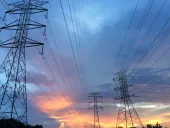
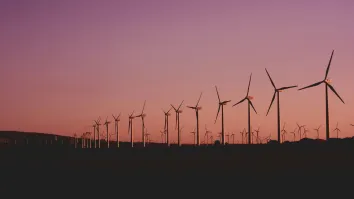

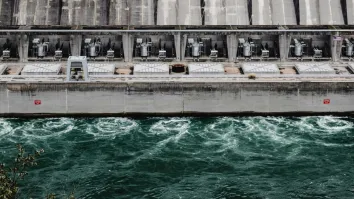
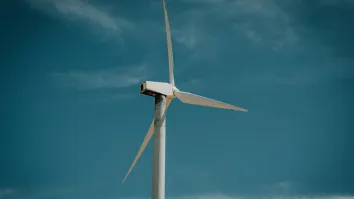













 Advertise
Advertise






